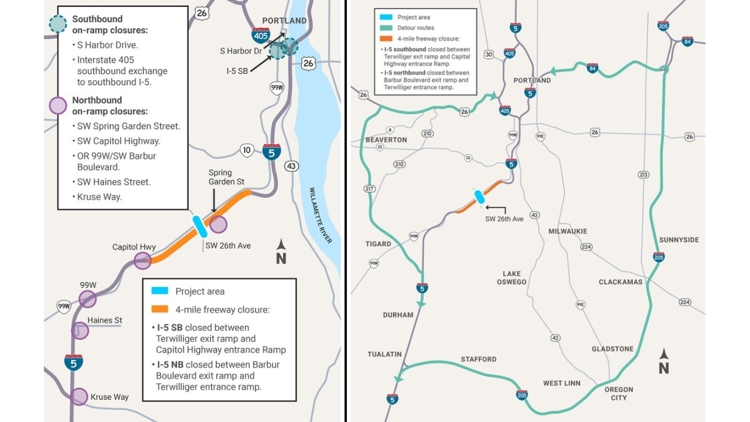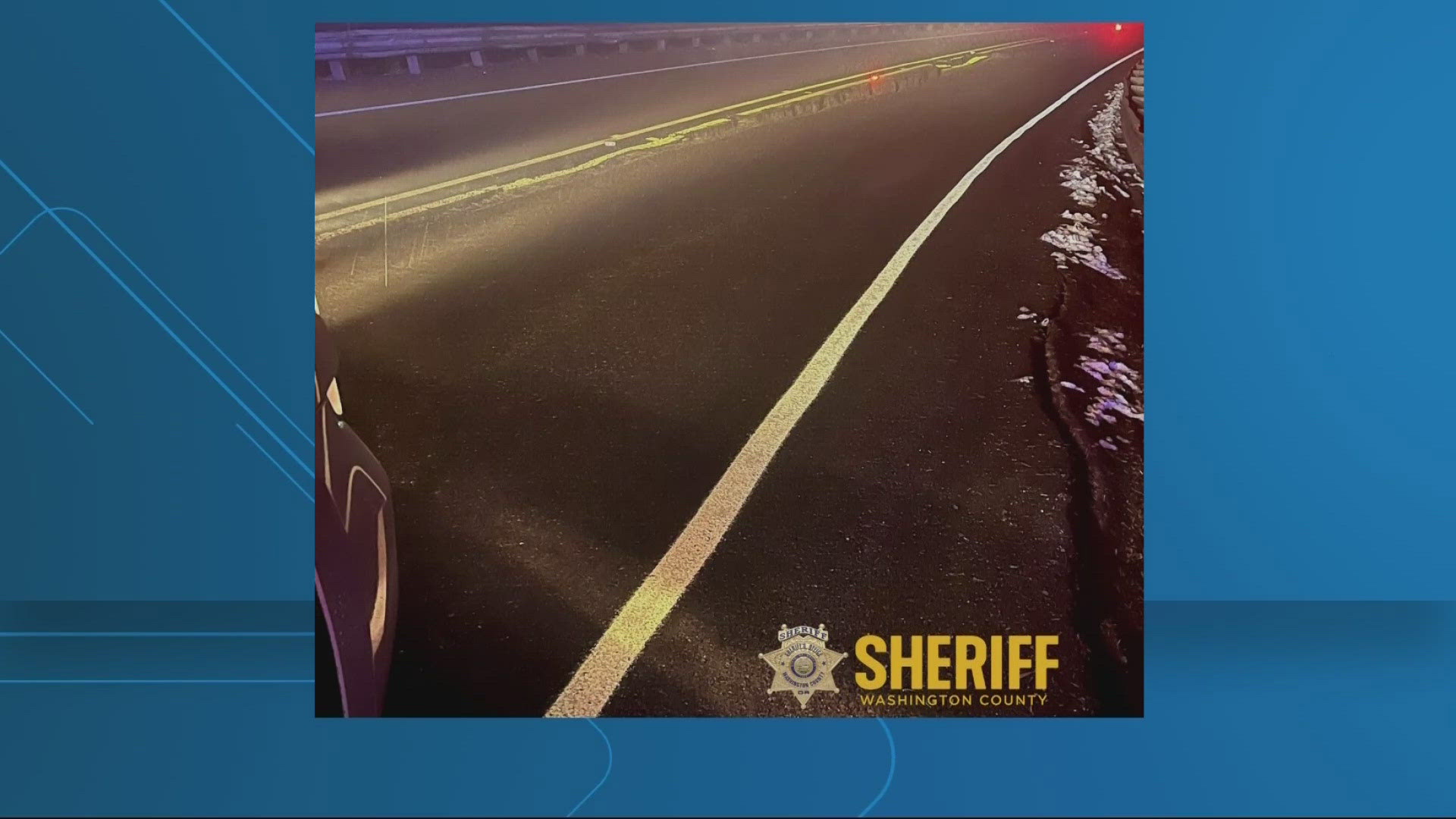PORTLAND, Ore. — A four-mile stretch of Interstate 5 will be closed in both directions for construction crews to rebuild the bridge deck spanning across Southwest 26th Avenue. The closure starts Friday, June 28 at 9 p.m. and ends Monday, July 1 at 5 a.m.
The Oregon Department of Transportation (ODOT) suggests that travelers planning to drive that stretch of I-5 use other major Portland-area highways such as Interstate 205, Interstate 84, OR 217 or U.S. 26. Southwest Barbur Boulevard will be open for local traffic.
To ensure that drivers do not enter the construction zone while work is going on, the following on-ramps will also be closed:
Northbound on-ramp closures
- Southwest Kruse Way
- Southwest Haines Street
- Southwest Capitol Highway
- Southwest Spring Garden Street
- OR 99W/Barbur Boulevard
Southbound on-ramp closures
- Interstate 405 on-ramp
- South Harbor Drive on-ramp
The I-5 bridge over 26th Avenue was built in 1959 and has been heavily worn down over time as it carries over 100,000 vehicles a day.
While it was widened in the 1980s, the plan for this project is to modernize the bridge by creating a smoother surface for motorists and bringing the bridge up to modern safety and seismic standards.
This project has been under construction for over a year now and has used a method of construction that builds the new bridge under the current bridge in order for I-5 to stay open. The Oregon Department of Transportation (ODOT) chose to apply this method of construction for a multitude of reasons, including:
- Safety: According to ODOT, four out of every five crash victims in work zones are the drivers or people in the car. By moving construction out of the way, it ensures a safer road space for motorists.
- Efficient use of time: ODOT reports that by using this method of building under the bridge, it not only has spared drivers the pain of having to sit in long traffic lines, but it has also cut construction time by six months.
- Cost savings: This method has saved an estimated $5.5 million in costs, ODOT reports.
- Less environmental impact: This method of construction has led to less waste and fuel produced from construction while also not harming the local water drainage pipe.



